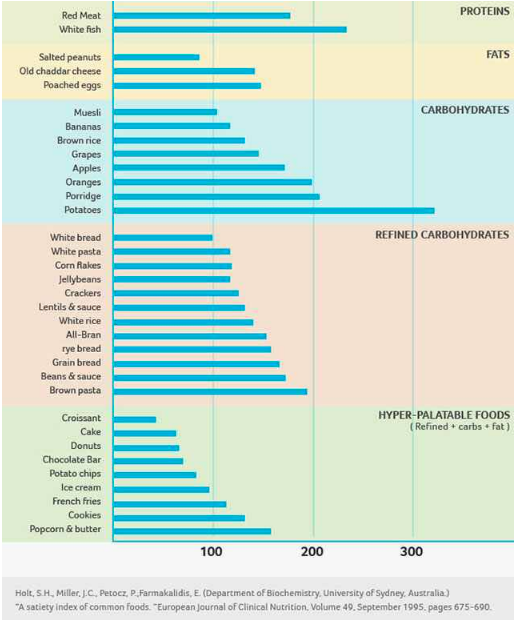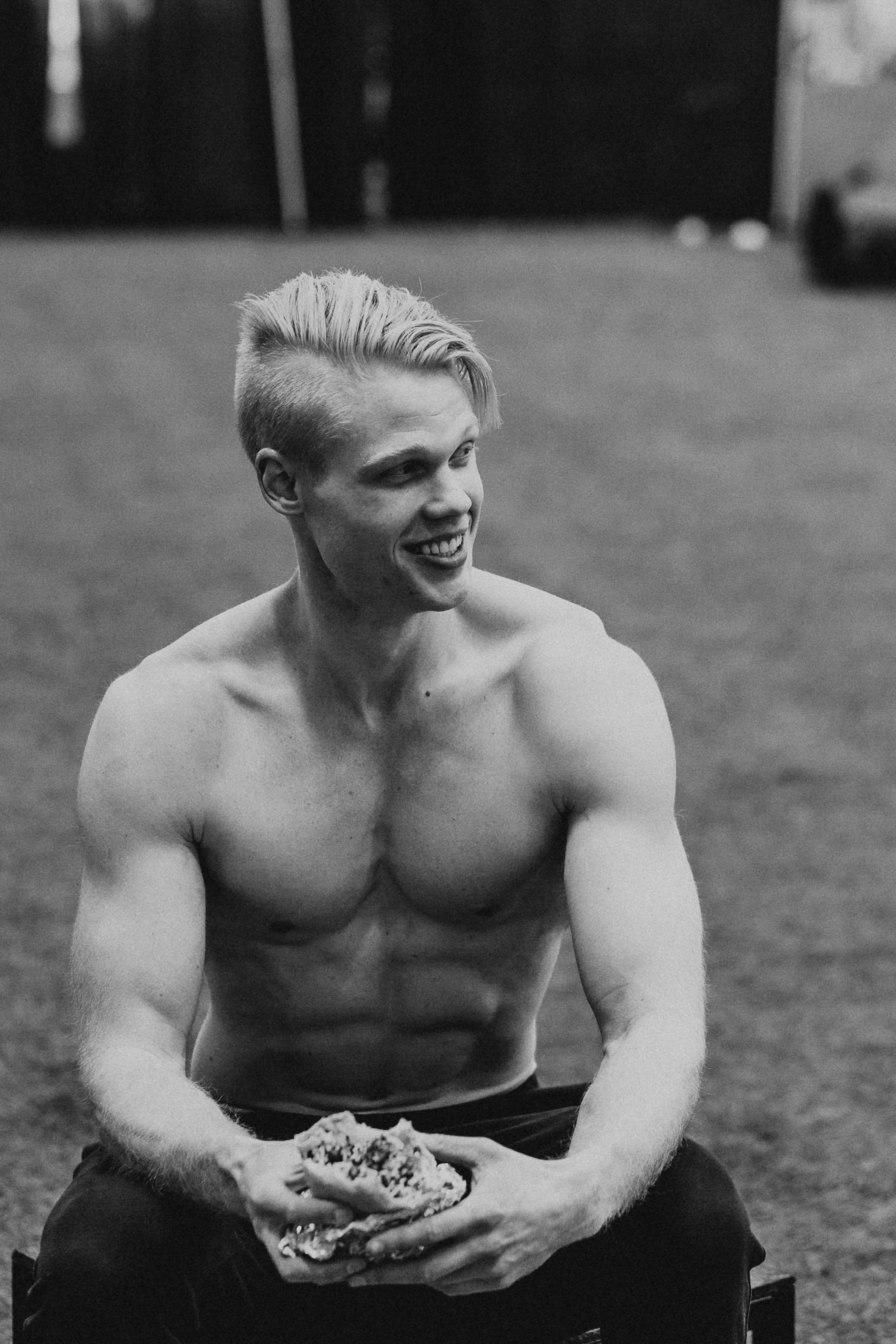Today's blog takes you through everything you need to know about diet breaks - a nutritional tool our online clients use frequently.
You'll learn:
→ How diet breaks impact your metabolism & hormones
→ The science-backed approach we use when implementing diet breaks
→ How you can use diet breaks to get the body you want, and keep it for a lifetime.
→ And much more...
What Is A Diet Break?
When you start online coaching with fat loss goals, we know that achieving said goals will require some time dieting (eating fewer calories than you burn).
A diet break is a 3-14 day period of eating more calories. The goal here isn't to gain OR lose fat - simply to eat at your maintenance calorie intake. Usually this increase in calories is coming primarily form eating more carbohydrates.
With most online clients, diet breaks are interjected every 6-12 weeks of dieting.
All of this sounds counter-intuitive... I get it.
Why would you purposely STOP fat loss?
I'd argue that diet breaks ARE the missing piece keeping you from achieving the lean body you want.
Why Take Diet Breaks?
The primary reason you'll hear people promote diet breaks is to prevent adaptive thermogenesis.
See, your body has four different ways it burns calories:
1. Basal Metabolic Rate (BMR) - Your BMR is the number of calories your body burns just to stay alive. Generally, the heavier you are, the higher your BMR.
2. Thermic Effect of Food (TEF) - Calories burned during digestion. It takes energy to turn the food you consume into energy. This is TEF.
3. Non-Exercise Activity Thermogenesis (N.E.A.T.) - All the calories you burn in your everyday movement outside the gym.
4. Thermic Effect of Exercise (TEE) - Calories burned lifting weights, doing cardio, etc.
These four mechanisms make up your metabolism.
As you eat fewer calories and get leaner, your metabolism adapts to prevent you from withering away into nothing:
→ Your body is smaller, so BMR decreases
→ You're eating less food, so TEF decreases (given macro composition stays the same)
→ TEE decreases, because it takes fewer calories to move your smaller body
→ NEAT generally decreases, because you feel lethargic due to lack of calories
Plus, levels of a hormone called Leptin also decrease. This leads to an increase in hunger, and less energy expenditure.
As you eat more and gain more fat, the opposite happens - metabolism increases, hunger decreases.
This up-regulation and down-regulation of your metabolism when dieting is called adaptive thermogenesis.

The thinking behind diet breaks is...
If eating more up-regulates your metabolism and hormones, then taking a diet break every 6-12 weeks means you'll arrive at the end of the diet with a faster metabolism and better hormones.
Which sounds pretty great, right?
The question is...
Does it really work like that?
What Does The Research Say About Diet Breaks?
The reality is, there hasn't been a ton of research on diet breaks in the sense we’re talking about here.
But the few we have are pretty promising.
→ This study from 2003 set out to prove that longer diet breaks would be detrimental to weight loss. However, they found out there wasn’t a statistically significant difference in weight loss between groups that continuously dieted and those that took diet breaks, for the same period of time. (So the diet break group spent less total time dieting, but lost the same amount of weight as those who dieted non-stop.)
→ The Matador Study. This study had two groups on a diet.
- Group 1: Followed the diet for 16 weeks straight, in a 33% calorie deficit.
- Group 2: Dieted in a 33% calorie deficit, followed by two weeks at maintenance calories. They alternated between the two until they had completed 16 total weeks of dieting. (So it took them twice as long.)
At the end of the study, the diet break group lost more fat, more weight, and seemed to see less adaptation in their metabolisms.

As you can see from the graph above (taken from the study), resting energy expenditure (REE - which is the same as BMR) remained higher in the intermittent dieting/diet break group (INT) than the continuous diet group (CON).
→ The Diet Breaks/Diet Refeeds Study. This study (published March 2020) took two groups through a 7 week diet.
- Group 1: Ate in a 25% calorie deficit, for 7 weeks straight.
- Group 2: Ate in a 35% calorie deficit 5 days per week, but every weekend increased calories to maintenance levels via carbohydrates (so the weekly deficit for both groups was equated). They followed this pattern for 7 weeks.
Both groups lost about 5.5 pounds of fat. But Group 2 was seemingly able to maintain more lean muscle mass during the seven diet - they lost less than a pound of muscle, while Group 2 lost nearly 3 pounds.
Maintaining more lean muscle means that your BMR, TEF, and calories burned via NEAT are higher.
So, these studies seem to show:
Taking diet breaks can lead to higher basal metabolic rate and maintaining more lean muscle - both of which equal a faster metabolism.

Relevant Podcast Episode: Diet Breaks & Refeeds - What Works & What Doesn't
Listen to my interview with researcher and Examine.Com writer Brandon Roberts, as we dive deep into the latest research on diet breaks & refeeds, and when/how they should be implemented.
What We're Still Not Clear On
While the results of most of the research we have seems pretty positive, there are some things we're still not sure about when it comes to diet breaks:
1. The human studies rely on self-reporting (the participants were responsible for tracking and reporting their own macros and adherence), which leaves a lot of room for error. In fact, it's thought that the primary benefits of diet breaks is psychological - they simply make the diet a lot easier to stick to.
2. Potentially longer diet time-frames. For example, the MATADOR group that saw significantly better results also took twice as long as the continuously dieting group. That said, I'd argue that the potential benefits of diet breaks, and the fact that you'll be much more likely to maintain your results long-term (and actually make it to your end goal) make it well worth the extra time.
3. It’s hard to unclear what the physiological benefits could be. We know that your metabolism is essentially a product of how much you're eating, how much you weigh, and how much you're moving.
^So it seems that you would lose any metabolism benefits of a diet break as soon as you resumed the diet.
The common thinking is:
- A potential increase in thyroid. Thyroid does account for a large chunk of your BMR. But it's unclear how much of an impact 3-14 days at maintenance could really have on thyroid hormone, because it's thought that thyroid is more a product of your current body composition than your calorie intake.
- A potential increase in leptin - We do have a study showing that overfeeding on carbohydrates resulted in an 7% increase in energy expenditure over 24 hours, due to leptin increase. However, leptin seems to be mostly a product of calorie intake (it drops quickly when the diet resumes), and body fat levels. So right now, it seems unlikely that leptin is responsible for any lasting metabolic benefits of a diet break.
Why Our Online Clients Take Diet Breaks
1. It's easier to maintain or build muscle, and glycogen stores are refilled more frequently - This is one benefit of diet breaks we're more clear on. Intermittent periods of eating at maintenance seem to make it easier to maintain your lean muscle. The opportunity to eat more carbs also helps re-fill your muscle glycogen stores - allowing you to train more intensely.
Both of these create a faster metabolism.
Plus, we work with online clients that want to get lean and strong. The ability to build or maintain more lean muscle in the dieting process is essentially to getting lean and strong instead of skinny.
2. It makes the diet psychologically easier for most, and improves adherence. The most important factor of any diet?
It MUST be something you can stick to long-term.
From my experience coaching hundreds of clients both in-person and online, continuously sticking to a diet for longer than 12 weeks is extremely challenging for most.
Past this point, adherence almost always gets worse - people's diets are usually on track 3-5 days out of the week, and off track 2-3 days. This leads to the sad situation many of us know so well - always feeling like you're dieting, but never seeing progress.
Taking a 1-2 week diet break when adherence starts to decrease seems to improve future adherence dramatically with clients.
So, even if the benefits of a diet break do turn out to be mostly psychological like some argue... does it really matter if they were psychological or physiological, as long as they helped you achieve the lean body you've always wanted in a sustainable way?
3. You need time to practice maintenance. The goal of online coaching is to empower you with the knowledge & skills to be successful on your own in the future.
One of the ways we do this is coaching clients through a maintenance - not just fat loss phases.
Periods of practicing maintenance allow you to learn new habits and behaviors around your food choices, training, daily movement, dietary flexibility, and what your entire lifestyle will need to look like to maintain this new, leaner body.
Practicing the ability to maintain is exactly what helps my clients keep their results, and break the yo-yo diet cycle so many others get stuck in.
How To Implement Diet Breaks
From the research we have, plus tons of real-world experience with clients getting MUCH better results taking diet breaks
→ Frequency: Every 6-12 weeks for most. The leaner you are, the more frequently it makes sense to take these (as you're at a higher risk for muscle loss, and your body has less fat stores to pull from for energy).
→ Duration: 1-2 weeks for most.
→ Calories: Total calories should be returned to your estimated maintenance intake.
To find this, look at your average weekly weight lost over the last month. We know that to lose 1lb of fat, you need to eat ~3,500 calories less than you burn.
So if you're averaging 1lb lost per week, we know you need to add back in ~3,500 calories per week/500 per day to be at your estimated maintenance.
→ Macros: Protein should stay at .8-1.2g/lb (don't decrease your current intake). We have some (very limited) evidence that it might be more beneficial to increase calories almost exclusively via carbs, due to leptin's responsiveness to it.
Leptin aside, increasing carbs to refill glycogen stores is smart. So it's likely most optimal to increase calories to maintenance almost exclusively via carbs, keeping protein and fat where they were on the diet.
→ Food choices: The biggest mistakes people make is thinking a diet break is a time to just constantly eat lots of calorie-dense foods. This pretty quickly puts you OVER your calorie goal, and isn't a realistic picture of how you need to eat long-term to sustain your results.
Stick mostly to the foods you normally eat, just in greater quantities. When you try to work in too many calorically-dense foods, you can easily eat MORE calories but be less satiated than when you're on your diet.
→ Weight Gain: You’ll likely feel a bit fluffier and weigh a bit more. Your body is holding more water, & your gut content has increased.
This doesn't mean you’ve gained fat back.
If calories in = calories out (which is the goal in a diet break), you won't gain fat.
Even if you slightly overshoot your maintenance intake, a gain a small amount of fat, it’s benefiting you long term by putting you in a better place to lose fat quicker in your next fat loss phase.
→ Mindset: This isn't just a time where you eat whatever and don't track. Think of this time as practicing maintaining - a crucial skill to have mastered when we get you as lean as you want. This is what makes your results sustainable.
We apply proven, science-backed nutrition & training methods through individualized coaching to help you get the body you want, and teach you on how to keep it for a lifetime.
>> Click here now to apply for online coaching with our team <<































































